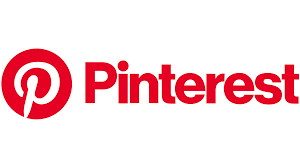Pinterest is a powerful platform for driving traffic and conversions, especially for visually appealing products and services. Here’s a comprehensive guide to help you create high-converting Pinterest ads that rank well on Google.

1. Understand Your Audience
Before creating your Pinterest ads, it’s crucial to understand your target audience. Identify their interests, behaviors, and preferences. Use Pinterest Analytics to gather insights about your audience and tailor your ads accordingly.
2. Set Clear Goals
Define clear objectives for your Pinterest ad campaign. Whether you want to increase website traffic, generate leads, or boost sales, having specific goals will help you measure your success and optimize your campaigns.
3. Create Eye-Catching Visuals
Pinterest is a visual platform, so your ad visuals must be compelling and high-quality. Here are some tips:
- Use High-Resolution Images: Ensure your images are clear and visually appealing.
- Incorporate Text Overlays: Add text overlays to highlight key messages and calls to action.
- Use Bright Colors: Bright and contrasting colors can help your pins stand out in the feed.
4. Write Compelling Ad Copy
Your ad copy should be concise, engaging, and aligned with your visuals. Include a strong call to action (CTA) that encourages users to take the desired action. For example, “Shop Now,” “Learn More,” or “Get Started.”
5. Optimize for Keywords
To rank well on Google, optimize your Pinterest ads with relevant keywords. Use tools like Google Keyword Planner to find high-traffic, low-competition keywords related to your products or services. Incorporate these keywords in your pin titles, descriptions, and hashtags.
6. Choose the Right Ad Format
Pinterest offers various ad formats, including Promoted Pins, Video Pins, and Carousel Ads. Choose the format that best suits your campaign goals and audience preferences. For example:
- Promoted Pins: Great for driving traffic to your website.
- Video Pins: Ideal for showcasing product features and benefits.
- Carousel Ads: Perfect for displaying multiple products or telling a story.
7. Set Up Conversion Tracking
Implement Pinterest’s conversion tracking to measure the effectiveness of your ads. This will help you track actions like sign-ups, purchases, and other valuable conversions. Use the Pinterest Tag to set up conversion tracking on your website.
8. Test and Optimize
Continuously test different ad creatives, copy, and targeting options to find what works best. Monitor your campaign performance and make data-driven adjustments to optimize your ads for better results.
9. Align Your Pins and Landing Pages
Ensure that your ad pins and landing pages are consistent in terms of messaging and visuals. A seamless user experience from the pin to the landing page can significantly improve your conversion rates.
10. Monitor and Analyze Performance
Regularly review your campaign performance using Pinterest Analytics. Track key metrics such as impressions, clicks, and conversions. Use this data to refine your strategy and improve your future campaigns.
Conclusion
Creating high-converting Pinterest ads requires a combination of compelling visuals, optimized keywords, and strategic targeting. By following these steps, you can create effective Pinterest ads that drive traffic and conversions, ultimately helping you achieve your marketing goals.
I hope this guide helps you create successful Pinterest ad campaigns! If you have any questions or need further assistance, feel free to ask.